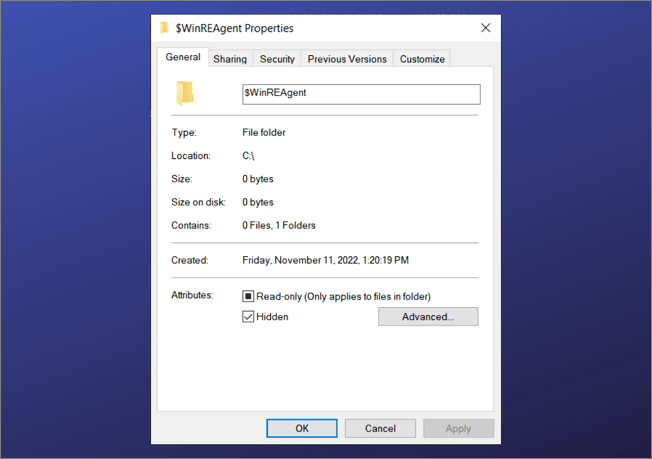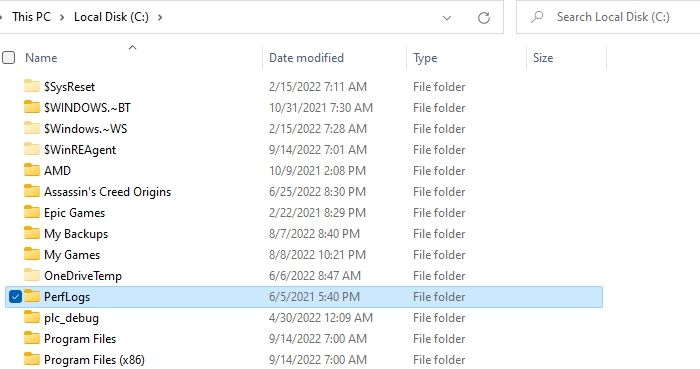Windows OS has its set of individual folders in the System driver that it uses to store crucial data of the PC. These directories and folders help users classify the different files in different sections. Have you wondered what each of these Root Directories means? What Are The Folders in The Root Directory Used for? The post will provide complete information about the Root Directory and its usage.
What is The Root Directory
The root directory is the top-level directory of a folder structure. The directory includes all other directories and files on a system and ends with a slash sign. All the folders in the computer system grow outwards from the root directory. In other words, we can also say that the root directory works as a tree trunk from where the different branches grow.
A hierarchy of directories used for organizing the different files perfectly on a computer system is known as a file system. The word root marks the root directory at the top to illustrate the upside-down tree's roots. Not every computer system, including MS-DOS, includes a root directory on their devices. These devices usually use a separate root directory for each storage device and partition involved in a computer system. Floppy disks or the C Drive are generally known as the root directory of a computer system.
What Are the Folders in The Root Directory Used for
The Root Directory includes different folders, each specifically designed to store particular files and applications. The folders included in the Root Directory and their uses are:
$WinREAgent
This folder comes in handy in Windows during updating or upgrades. The folder includes the temporary files for recovering deleted files on Windows in case any issues happen during the process.
Check and install any pending Windows Updates before deleting the $WinREAgent folder - if you do not have any available, reboot and remove the $WinREAgent folder.

MSOCache
It is another temporary folder present in the Root Directory of Microsoft Office. The folder detects and repairs issues, maintains, and installs service packs and patches. Users of Windows are free to delete these folders or any tasks as per their preferences.
PerfLogs
PerfLogs are for Performance Logs which are system-generated files present in Windows. It stores logs that contain system issues and other performance-related reports conveniently. This folder is usually in the C drive, and one can remove or relocate it to another partition per the user's preferences.

Program Files
Program Files are another important folder option in the root directory for installing third-party applications on Windows by default. The folder includes different subfolder options where an application installed is stored.
Program Files (x86)
It is another folder option available in the root directory that includes 32-bit applications. Whenever we install the 32-bit application on a 64-bit Windows, it moves directly to the Program Files (x86).
There is only a little difference between the regular Program files and Program Files (x86). The regular Program Files folder includes 64-bit applications, whereas the Program Files (x86) features 32-bit applications.
ProgramData
This folder specifies the path to the program data folder and the applications used for storing data by standard users.
Recovery
As the name describes it well, this folder conveniently includes the recovery files of your Windows. If it does not recover the files you want, you can try EaseUS Data Recovery Wizard.
Users
A user folder is for files and folders of a user's account. Folders such as Documents, Downloads, Music, Video, and any file on the desktop are available in this folder.

$Recycle.Bin
This folder includes all of the detailed files of your computer system. Therefore, one can quickly recover the deleted files from their device through this folder.
Documents and Settings
This folder includes Desktop, Start Menu, My Documents, and Favorite options.
System Volume Information
This folder is created automatically at the root of each drive and stores system data in it.
Hiberfil.sys
This folder includes all Microsoft Windows OS files created during computer hibernation. When the computer reboots, it loads this file for instant boot.
Pagefile.sys
This folder is all about how Windows handles the virtual memory of your device using the demand paging. When the PC needs more RAM, virtual memory comes into use to temporarily store data.
Swapfile.sys
This file is for storing temporary data from Windows Universal Apps. It is a particular type of page file used internally by the system to make certain kinds of paging operations more efficient.
Conclusion
The root directory is the topmost folder in a file system. It contains all of the other folders and files in the system. The folders in the root directory are used for specific purposes, such as storing user data or application files. Understanding how to use these folders can help you better manage your files on your computer. Have you ever needed to find a specific file on your computer but didn't know where to start looking? Learning about the root directory and its folders can be helpful. By understanding how the structure of a file system works, you can more easily locate and manage your files.
Was This Page Helpful?
Daisy is the Senior editor of the writing team for EaseUS. She has been working at EaseUS for over ten years, starting as a technical writer and moving on to being a team leader of the content group. As a professional author for over ten years, she writes a lot to help people overcome their tech troubles.
Related Articles
-
Windows 11 24H2 Update Issues and Fixes
 Roxanne/2024-10-21
Roxanne/2024-10-21 -
What Is MacOS Extended Journaled? [Updated 2024]
 Tracy King/2024-11-27
Tracy King/2024-11-27 -
Ways to Delete Windows 7 Backup [Updated 2024]
 Daisy/2024-11-25
Daisy/2024-11-25 -
What Is Boot Partition? [Specifically Explained]
 Tracy King/2024-11-27
Tracy King/2024-11-27
